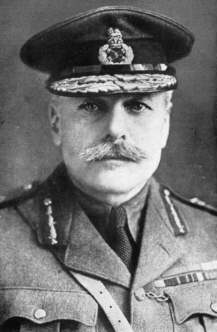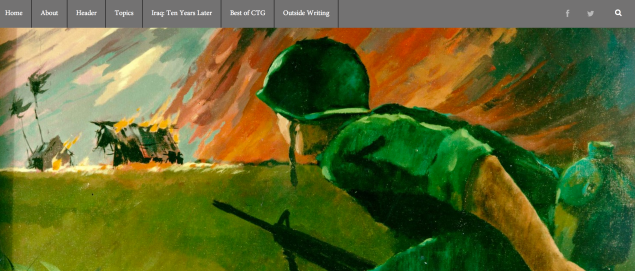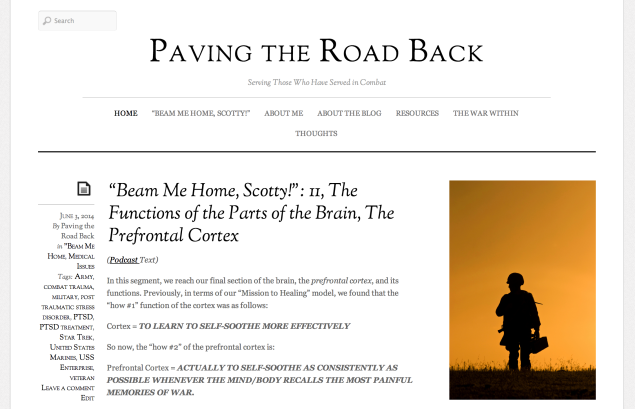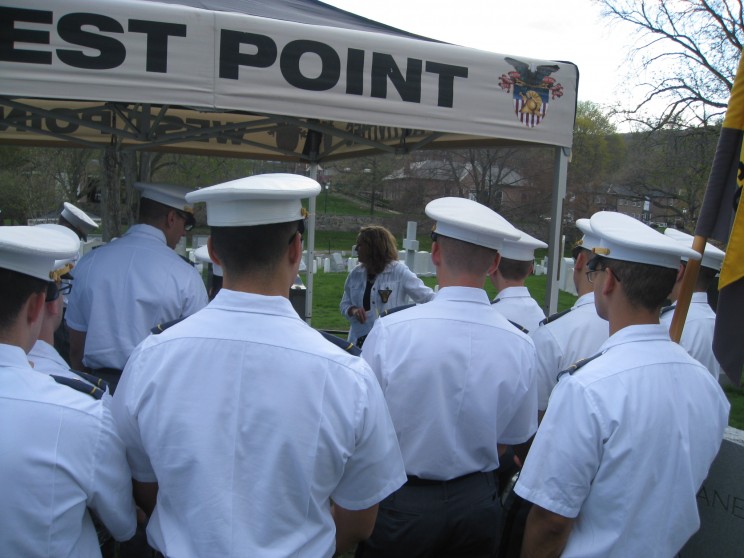 From Haig to Kitchener, and Vera Lynn to Wilfred Owen, how well you know the figures of the First World War? Who’s Who highlights the individuals who had an impact on the events of the Great War. Looking through Who’s Who, we are able to gain a snapshot of the talents and achievements of these individuals, and how they went on to influence history.
From Haig to Kitchener, and Vera Lynn to Wilfred Owen, how well you know the figures of the First World War? Who’s Who highlights the individuals who had an impact on the events of the Great War. Looking through Who’s Who, we are able to gain a snapshot of the talents and achievements of these individuals, and how they went on to influence history.
Your Score:
Your Ranking:
Who’s Who is the essential directory of the noteworthy and influential in every area of public life, published worldwide, and written by the entrants themselves. Who’s Who and Who Was Who 2014 includes autobiographical information on over 134,000 influential people from all walks of life. You can browse by people, education, and even recreation. Check out the latest feature article, which offers article content on those who shaped history between the years 1897 and 1940. For free lives of the day, follow Who’s Who on Twitter @ukwhoswho
Subscribe to the OUPblog via email or RSS.
Subscribe to only British history articles on the OUPblog via email or RSS.
Image credit: Field Marshal Douglas Haig. Image available via Wikimedia Commons.
The post How much do you know about the First World War? appeared first on OUPblog.

Last week was the 70th anniversary of D-Day, the start of the Allied landing in Normandy, France, that contributed to the end of World War II.
While some marked it with (deserved) pomp and circumstance, we observed it by reading the latest from some of our favorite veterans’ blogs on WordPress.com:
Then-infantryman Don Gomez served two tours in Iraq with the US Army in the early 2000s. After a stint in graduate school and a dissertation on the experiences of Iraqi soldiers during the Iran-Iraq War, he re-upped and heads to Afghanistan later this summer as a Second Lieutenant.

His blog, Carrying the Gun, is a mix of thoughtful essays on everything from modern soldiering to women in combat to the transition from soldier to civilian. Sprinkled throughout are photos and letters from his Iraq deployments — a fascinating portrait of the life on the front lines.
O-Dark-Thirty is a literary journal for veterans, current military personnel, and their families. Created by the Veterans Writing Project, it helps those who have served tell their stories — and makes sure those stories are accessible to the rest of us.

The magazine is home to The Report, which publishes unedited fiction, non-fiction, and poetry, and The Review, an edited quarterly journal presenting the best literary writing on the veterans’ experience. Browse the latest entries for a poetic take on the forgotten veteran, a fictionalized encounter between German and Russian troops, and a writer’s memoir of a day spent driving his wounded brother to yet another hospital.
O-Dark-Thirty accepts submissions year round — find their guidelines here — and the Veterans Writing Project holds workshops around the US.
For many soldiers, especially those who have served in combat roles, returning to “regular” life brings a new set of challenges. In Paving the Road Back, psychiatrist and Warrior Wellness Unit director Rod “Doc” Deaton gives those who serve our veterans a deeper understanding of the stresses of this transition.

Readers seeking information on Post-Traumatic Stress Disorder will find analyses of the ethics of PTSD diagnoses and the relationship between PTSD and other psychiatric disorders, along with the stories of real veterans (fictionalized, to protect their privacy). “Doc” also provides the transcripts of his podcast, “Beam Me Up, Scotty,” and a variety of additional links and resources.
For more reading, check out:
- Firefight, blog of Rick Kurelo, who served with Canadian forces in Bosnia and Afghanistan and recently published a book on his experiences.
- Fever Dreams, the official site of Brian Castner, Iraq veteran and author of the bestselling book The Long Walk.
- Voices from War, which provides writing workshops for veterans interested in telling their stories.
- Jason Lemieux, a former Marine and current human rights advocate.
- True Boots, the blog of Army vet and frequent NPR guest Kristen Rouse.
- From the Green Notebook, where current Army officer Joe Byerly discusses military life and leadership best practices.
- Grand Blog Tarkin, a collaborative blog at the intersection of contemporary warfare and science fiction covering “the full range of war and warfare across the multiverse.”
Filed under:
Community,
Reading 

By Michael D. Matthews
My daily walk to work takes me through West Point’s cemetery. Founded in 1817, the cemetery includes the graves of soldiers who fought in the American Revolution, and in all of the wars our country has fought since. I often stop and reflect on the lives of these men and women who are interred here. Many headstones are of West Point graduates who were killed in World War II, including several on D-Day. Others fell in the Civil War, the Spanish-American War, World War I, and Korea and Vietnam. One section holds special significance for me, since it contains the graves of former cadets and colleagues I have known in the past 14 years who died in Iraq or Afghanistan. No matter how preoccupied I may be with the vagaries of day to day life, a sense of peace and calm envelopes me as I stroll among the headstones. I feel I am among friends and comrades and there is a sense of connectedness with the past.

One of the soldiers interred at West Point is Lieutenant Christopher Kurkowsi. Chris graduated from West Point in 1986 with a degree in Engineering Psychology. He became an artillery officer and was killed on 26 February 1988 when the helicopter he was in crashed while on a routine training mission. At the time of the accident, Chris’s academic mentor at West Point, Lieutenant Colonel Timothy O’Neil, had initiated paperwork to send Chris to graduate school in psychology with a follow-on assignment to his old department at West Point. According to Lieutenant Colonel O’Neil, Chris would have made a tremendous psychologist and professor. Chris’s death exemplifies the loss of talent and potential of all of the soldiers buried at West Point.
Earlier this month, West Point held its annual “Inspiration to Serve” cemetery tour. All members of the West Point Class of 2016, who are finishing their second of four years of academic study and military training at West Point, participated. On this day, classmates, family, or friends of the fallen stand by a gravesite, and tell the story of the deceased to the cadet attendees. Of special interest this year, MaryEllen Picciuto, one of Chris Kurkowski’s classmates, told his story of service and sacrifice. The cadets stood respectfully and listened intently, as Ms. Picciuto brought Chris back to life through her remembrances. As she did this, other cadets stood by other graves, hearing the life story of other West Point graduates who gave their lives in the service of our country.

As a Nation, our move to an all volunteer force has distanced most Americans from direct experience and knowledge of the military and the men and women who serve. Cognitive psychologists make a distinction between semantic and episodic memory. The former is memory of generalized facts that are not part of our own personal experience. The latter, in contrast, are of events personally experienced. Think about your own memories. Those that are episodic are likely more vivid and tangible, and perhaps have more meaning in your own life story. You “know” from semantic memories, but you can “feel” in episodic memories.
Perhaps this Memorial Day, in between picnics and family activities, you can visit a veterans cemetery. Walk among the headstones, read the inscriptions, and reflect on what these men and women sacrificed for our Nation. Like Lieutenant Kurkowski, they had dreams, ambitions, life goals, and family and friends who loved them. Through such a visit, perhaps you can form an episodic memory by honoring the fallen for their service, and in doing so forge a more personal connection with these American heroes.
Note: The views expressed herein are those of the author and do not reflect the position of the United States Military Academy, the Department of the Army, or the Department of Defense.
Michael D. Matthews is Professor of Engineering Psychology at the United States Military Academy. Collectively, his research interests center on soldier performance in combat and other dangerous contexts. He has authored over 200 scientific papers and is the co-editor of the Oxford Handbook of Military Psychology (Oxford University Press, 2012). Dr. Matthews’ most recent book is Head Strong: How Psychology is Revolutionizing War (Oxford University Press, 2014).
Subscribe to the OUPblog via email or RSS.
Subscribe to only brain sciences articles on the OUPblog via email or RSS.
Photos courtesy of Michael D. Matthews. Used with permission.
The post Psychology, veterans, war, and remembrance appeared first on OUPblog.

National Veterans Awareness Week United States Senate Resolution 143 November 11 to November 17, 2012 The resolution calls for educational efforts directed at elementary and secondary school students concerning the contributions and sacrifices of veterans. Veterans Day “As we express our gratitude, we must never forget that the highest appreciation is not to utter words, but to [...]
In celebration of National Picture Book Month and Veteran’s Day:
Give a Military Family a Free Book

11 Ways to Ruin a Photograph book
In celebration of National Picture Book Month and Veteran’s Day and to honor of our military families,
download and give a free children’s picture book to a military family.
THE STORY: “11 Ways to Ruin a Photograph”
When her father goes soldiering for a year, a girl decides that without Dad at home, it’s not a family photo album. Though her beloved Nanny is in charge of the album that year, the girl makes sure that photographs of her never turn out well. Photos are blurred, wind blows hair in her face. April rains bring umbrellas to hide behind. Halloween means a mask. This poignant, yet funny family story, expresses a child’s anger and grief for a Dad whose work takes him away for long periods of time. It’s a tribute to the sacrifices made by military families and to those who care for children when a family needs support.
THIS STORY IS A WINNER!
In conjunction with “
The Help” movie (www.thehelpmovie.com),
TakePart.com (www.takepart.com/thehelp) recently sponsored three writing contests: a recipe contest, an inspirational story contest and a children’s story contest.
TakePart is the digital division of Participant Media which aims to bolster a movie’s audience with a message of social change. THE HELP movie campaign emphasized the role of stories in people’s lives.
Notice: This site and the story are not endorsed by or affiliated with TakePart, LLC or the motion picture “The Help” and or its distributors.
READ THE BOOK!
Darcy Pattison’s story, “11 Ways to Ruin a Photograph” is the winning children’s story. It is a free download at www.takepart.com/thehelp, or download it here (pdf download).
You can also order it for your:
MORE
Read more at www.11WaystoRuinaPhotograph.
PLEASE pass this along to anyone who might know a military family or to anyone in the military that you know.


Noralee Frankel is the Assistant Director, Women, Minorities, and Teaching at the American Historical Association. Her new book, Stripping Gypsy: The Life of Gypsy Rose Lee, is the  biography of a woman who was constantly torn about her choices as a beautiful and intelligent woman immersed in the burlesque world. In the original post below Frankel looks at Gypsy’s patriotism.
biography of a woman who was constantly torn about her choices as a beautiful and intelligent woman immersed in the burlesque world. In the original post below Frankel looks at Gypsy’s patriotism.
Gypsy’s greatest triumph as an entertainer was not her performance at Minsky’s, at the World’s Fair, or even on Broadway; but her tours of military bases beginning during World War II. In December 1943, she hitched up her trailer to her car and drove from New York to places like Fort Bragg, North Carolina, haggling with gas rationers along the way.
Gypsy encouraged soldiers’ participation in her act, even though their contribution brought more rehearsals and a less polished show. One Friday night, Gypsy performed for Army Air Force pilots in training at Gunther Field, Alabama. Her number “Gimme a Little Kiss” depended on at least three volunteers. Another number, “I Don’t Get It,” included Gypsy and the Gunther Field Rockettes. With Gypsy supplying the costumes, soldiers dressed as strippers. The program indicated that Gypsy’s performance with the enlisted men was the first time the post had staged their own show. At Bergstrom Field in Austin, Texas, the male chorus line wore costumes with heart motifs and GI mops for wigs. Gypsy donated one of her outfits to a soldier who impersonated her amazingly well in a show entitled “This Is the Army.”
Gypsy also liked to parody gender roles in these skits and acted as the sexual predator against a poor, helpless enlisted man. In the scene, Gypsy took a soldier out on a date and then she would try to convince the soldier to let her come into his home. The soldier demurred, remarking on the lateness of the hour. When Gypsy tried to kiss him, he exclaimed, “Certainly not! I’m not that kind of boy!” He insisted, “I’d hate myself in the morning.” Gypsy responded that she loved him “like a sister.” The soldier retorted, “My sister never looked at me like that.” A military police officer misreading the situation once assumed the soldier had been bothering Gypsy. He ordered the soldier to move along.
In 1951, Gypsy wanted to perform for troops stationed in Germany while she was touring Europe, but the army refused, probably because she was blacklisted from TV and radio for her political views a year earlier. By the mid-1960’s, Gypsy was back in good graces and off she went to entertain soldiers, as she had 25 years earlier, only this time in Vietnam.
In her fifties, she no longer performed, but still thought of herself as a “sexy grandmother.”


By:
Danette Haworth,
on 2/22/2008
Blog:
Summer Friend
(
Login to Add to MyJacketFlap)
JacketFlap tags:
Army,
Navy,
Air Force,
Marine,
Coast Guard,
slogan,
Bartlett's,
Navy,
Air Force,
Marine,
Coast Guard,
slogan,
Bartlett's,
Add a tag
CJ Ray has tagged me with a most creative meme: I must grab the closest book with more than 123 pages, turn to page 123, go five sentences down, and provide the next three sentences here.
How fortuitous that Bartlett's tome sits nearby; a book on bodily functions occupied a nearer space yesterday.
Here are the words from the required quadrant:
Modestus said of Regulus that he was "the biggest rascal that walks upon two legs."
There is nothing to write about, you say. Well then, write and let me know just this--that there is nothing to write about; or tell me in the good old style if you are well. That's right, I am quite well.
* * *
I included a bonus sentence because I like the flip voice of the speaker.
My tag is open--if you like this meme, show us what you've got!
In other news, Stephen Parrish gave me an E for excellence blog award. Thank you, Stephen! I'll add it to my sidebar.
Being noted for excellence is an inspiration to aspire to greater heights. I want to achieve excellence in all my endeavors. I want to be all I can be. Oh, wait, that's the Army.
Get an Edge on Life, that's the Army, too, but the other slogan,
Be All You Can Be is better. Here are a few more:
It's not just a job. It's an adventure! Navy slogan. I give it an E for excellent!
The Few. The Proud. Marine Slogan. SC for super cool!
Aim High. Air Force. O for okay.
Be Part of the Action. Coast Guard. B for boring. There's gotta be something better than that. Post your alternative in the comments!

By: Rebecca,
on 1/28/2008
Blog:
OUPblog
(
Login to Add to MyJacketFlap)
JacketFlap tags:
History,
war,
Politics,
Blogs,
iraq,
army,
navy,
Media,
A-Featured,
d,
greek,
david,
World History,
oupblog,
military,
milblogs,
perlmutter,
blogwars,
Add a tag
On January 29, 7:30pm the Dole Institute of Politics at the University of Kansas will host a panel on “Military Blogging and America’s Wars.” The guests will include John Donovan, one of America’s leading milbloggers (who was invited to meet President Bush in the White House); Ward Carroll, a retired Navy Commander who flew F-14s and editor of www.Military.com; and Charles J. “Jack” Holt, chief of New Media Operations for the Department of Defense. David D. Perlmutter, a professor in the KU School of Journalism & Mass Communications , and author of Blogwars, will moderate the session.
In Blogwars Perlmutter examines the rapidly burgeoning phenomenon of blogs and questions the degree to which blog influence–or fail to influence–American political life. In the post below Perlmutter introduces us to Military Blogs.
The Greek philosopher Heraclitus is supposed to have said that “war is the father of all things.” It is absolutely true that where we live, the language we speak, the flags we fly, the beliefs we hold, the land we live on, and even our genetic heritage have been affected by who won and lost wars. Likewise, much of our technology was created for or improved toward making war. (more…)
Share This
National Geo has a list of the 100 greatest adventure books of all time.
It's a pretty comprehensive list, but it omits two of the my favorites: On the Border with Crook by John Gregory Bourke and Albert Dean Richardson's The Secret Service, the Field, the Dungeon, and the Escape and Beyond the Mississippi, From the Great River to the Great Ocean.
Bourke was a captain in the Third Cavalry, and ADC to General George Crook; On the Border details their experiences in Arizona, the Dakotas and the Battle of the Rosebud, among other adventures. Bourke had an excellent eye for the trivial, and his descriptions of every-day life in dusty Arizona garrisons is unmatched elsewhere. His descriptions of 1870s Tucson are particularly priceless.
Richardson was a true adventurer; prior to the War for Southern Secession, he traveled across the Trans-Mississippi West, dodging Indians, thirst, Sodbusters and um, those troublesome guys in Kansas who had a colorful nickname I can not at this moment remember. During the War, he was a journalist who got himself captured by the Rebs, ended up in Libby Prison (I think it was), from which he made the daring escape referred to in his title. Then, after the War, Richardson got caught up in a love-triangle that resulted in his murder by a jealous husband, who, after a sensationalistic trial, was found not guilty by reason of insanity.
And it's impossible to take any such list seriously when it omits the two most important adventure books ever written. I mean, of course, Across the Andes by Frog and There and Back Again.
Now, personally, I think that perhaps the sight of a giant robot bear coming across the battlefield to rescue me would be a less than reassuring sight, but perhaps I guess you don' t really know for sure until you've been there. There are no atheists in fox-holes; also everyone in foxholes loves giant robo-bears.
In theory, Fort Gehenna guards the border between Arivaipa Territory, a client of the Republic of Califa, and the ominous Huitzil Empire, with which Califa is currently at war. But in practice, there is no true border, only a haze of hot sand and prickly cactus that no one can cross and expect to live. The glory of war is being gained elsewhere, and the sweating soldiers at Gehenna are mostly bored, hot, and nostalgic for home.
To the west of Gehenna the Stoneman Road ruts its way across the Sandy River (more of a trickle than an actual flow) to Calo Res, Toronado and Civilization Beyond. To the east the Abrazas Mountain looms, its snowy heights a distant tantalizing vision of clarity and coolness. To the north, unnamed mountains bristle with cactii. To the south, raw desert, sandy and barren, beyond which lies the Huitzil Empire. And everywhere above: the blue burning sky.
I was so busy with the last day of Wiscon that I didn't have a chance to memorialize Memorial Day--tho' in my defense, not a day goes by without me thinking about the sacrifices that so many men and women (and dogs too!) have made to our great country.
It's a bit of cliche to say that freedom ain't free, but it's true.
So in the words of the old Army song:
"Raise a cup to the dead already
And hurrah for the next to die!"
And hurrah for those still living, too!
Happy Memorial Day!
A somewhat urgent sounding post from FreeGovInfo: “[A]t a time when the wars in Iraq and Afghanistan are greatly ramping up the need for evidence-based medicine in the military, the Pentagon seems to be choosing to gut their medical information resources.”
army,
closing,
library
The Alacran Regiment is the only regiment in the Army of Califa which does not wear black uniforms. In keeping with their reputation, their regimentals are sangyn colored. What color is sangyn?
Sangyn is red. But not just any red--a good true bluish blood red.
The word sangyn, of course, is a derivation or alternative spelling of sanguine, which the OED defines as "blood red." The first written record of its usage as a color came in 1500, but in 1386 Chaucer described a character "In sangwyn...he clad was al." These usages all come from a time before spelling was standardized, and people tended to write words out phonetically (how they sounded.) Different accents resulted in different spellings.
The particular spelling that I use comes from the Elizabethan era. This was a great time period for color names. The Elizabethan Costume website has a long list of fabulous colors, including popinjay, incarnate, puke, dead spaniard, and the delightfully named goose turd. (Gee--wonder what color that is?)
The Alacran Regimental uniform has argent (silver) facings, and argent aigulettes, and looks a little like this. The skirts are shorter, of course, and the weskit not so tightly cinched. The dress wig is also sangyn, and the gorget is argent, and embossed with a stylized scorpion, the animal, from which, of course, the Alacran take their name.
 From Haig to Kitchener, and Vera Lynn to Wilfred Owen, how well you know the figures of the First World War? Who’s Who highlights the individuals who had an impact on the events of the Great War. Looking through Who’s Who, we are able to gain a snapshot of the talents and achievements of these individuals, and how they went on to influence history.
From Haig to Kitchener, and Vera Lynn to Wilfred Owen, how well you know the figures of the First World War? Who’s Who highlights the individuals who had an impact on the events of the Great War. Looking through Who’s Who, we are able to gain a snapshot of the talents and achievements of these individuals, and how they went on to influence history. 










Wonderful post and information for veterans and their families
Reblogged this on Arts Digital Humanities Technology and Science and commented:
An eclectic selection of posts marking Veterans Day and DDAY, whatever your perspective insights and opportunities to read listen and learn from those who actually cheers and thanks to the WordPress. Com team . Thanks.
Also I recommed: Pacific Paratrooper Blog:
http://pacificparatrooper.wordpress.com
As a daughter and a wife of vets, I understand the plight of the American Veteran. My husband has PTSD from his service in Iraq and all he gets is the run around from the VA who doesn’t seem to give a damn about him.
I know being a soldier in war time as close to 180° turn about from serving in peace time like myself.
I have an idea about what war time soldiers go through only because my only son, was a police officer in one of the most violent suburbs of Southern California. He is no longer with us, but we certainly know he is in heaven.
We will always pray for our troops and police officers. They all need our prayers because frankly, they are all at war in the world we live in today. Great real life stories that deserve real attention from the Armed Services and United States Government. Our men and women lay it all on the line fort this country, and it is never fair they do not get the same respect in return through whatever it takes to honor them by taking care of their needs.
They deserve to lead a lifer of some kind of normalcy
Thanks for the mention!
I really think you should have looked closer and found Colonel Mike Grices’ site to help veterans make the transition home. His site is loaded with information for everyone -
http://orderstonowhere.com
Please take a peek into it. Thank you.
That’s amazing and something that most of us will never experience. So glad that these vets are sharing and letting others know what they’ve been through and maybe how the rest of us can help.
We all owe so much to these brave men and women who fight for all our freedom. Ever since I was a child, I have always enjoyed history and I was so pleased to see the D-Day 70th anniversary on 6th June being marked all over the world. I was so proud to see so many veterans at the event in Northern France, knowing that it would probably be the last time we see them at D-Day anniversary events.
I wrote a short story in honour of all the men and women who gave their lives fighting for our freedom on 6th June 1944.
http://hughsviewsandnews.com/2014/06/06/d-day-6th-june-1944/
We will never forget them.
My pleasure!
Thanks for sharing this additional resource!